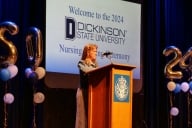You have /5 articles left.
Sign up for a free account or log in.
Higher education faces a number of wicked problems that are exceeding difficult to solve, precisely because any solutions are enormously expensive, exceptionally complex, and extremely divisive, and require implementation at scale.
One wicked problem is how to moderating the growth of tuition in the face of a decline in per student public support. Another is how to address simultaneously the three components of the iron triangle of access, affordability, and quality.
For many broad-access universities, moving the needle on student success is the super wicked problem. Piecemeal solutions have had only incremental impact; but more holistic and transformational solutions are exceedingly difficult to execute.
The challenges institutions face in dramatically improving rates of student success are multiple. There are the structural challenges. Academic calendars and class schedules too often fail to align with students’ complex lives. Course offerings too often don’t match up well with the students’ schedule. The fifteen week semester and the fifty- or seventy-five-minute class two or three times a week pose challenges for students with full-time jobs or caregiving responsibilities.
Then there is the shifting nature of the student population higher education serves. Higher education’s student body is increasingly diverse not only ethnically, but in terms of high school preparation. Few professors can count on all of their students being college-ready, especially in STEM fields.
Another challenge lies in campus cultures that are resistant to academic transformation. The impediments are multiple. Legacy technologies are unable to support competency-based education that does not conform to standard terms. Nor can incumbent Student Information Systems consolidate information from various data silos. The kinds of innovations many innovators call for – including guided curricular pathways with limited choice of courses or an increasing emphasis on experiential learning – are difficult to square with a tradition of faculty autonomy in deciding which courses to offer and which pedagogical methods to deploy.
Meanwhile, a competency-based approach, which rests on the assumption that most students are capable, with sufficient time and mentoring, of achieving proficiency, is at odds with traditional grading practices that view low grades and high failure rates as symbols of high academic standards.
Within the University of Texas System, we believe that the best way to promote innovation is to establish islands of disruption free from the constraints of incumbent practices. Staffed by coalitions of the willing, these islands of innovaton are X-Sites, where curricular and pedagogical experiments can be prototyped and expanded if proven effective.
But such X-Sites are only successful when there is a consensus among the participating faculty about the problem that needs to be solved. At many institutions, there is not a pressing sense of a need for innovation. Neither cost nor student success are considered matters demanding radical solutions. The problems that their faculty perceive are different, for example, raising their institution’s reputation, increasing funded research and scholarly productivity, or launching cutting-edge interdisciplinary programs.
Without a sense of urgency, student success, the most wicked of higher ed’s wicked problems, can’t be solved.
Steven Mintz is Executive Director of the University of Texas System's Institute for Transformational Learning and Professor of History at the University of Texas at Austin. Harvard University Press published his latest book, The Prime of Life: A History of Modern Adulthood.







